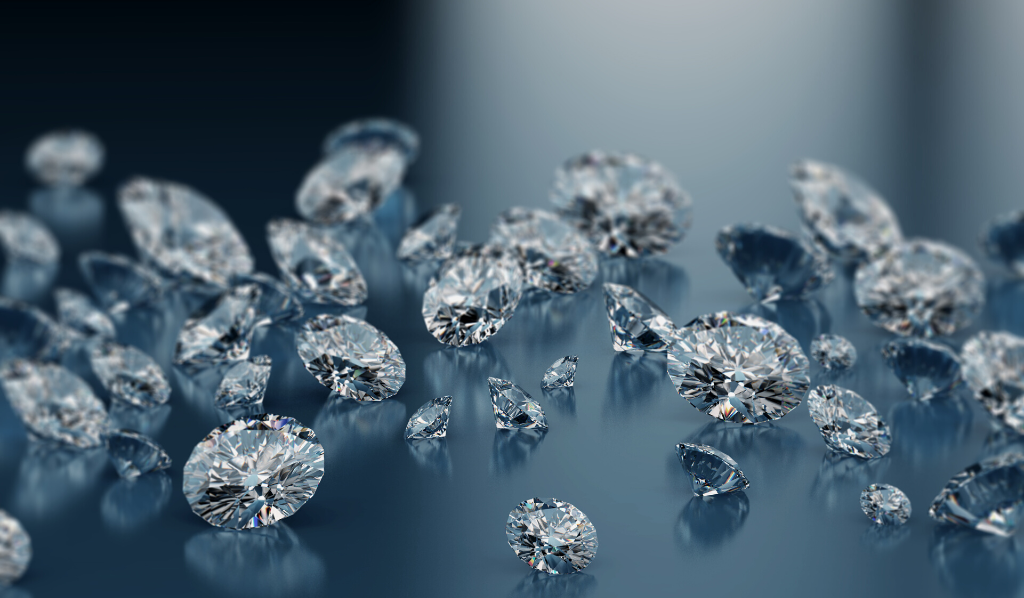Diamonds have always been a symbol of love, luxury, and prestige. However, with advancements in technology, we now have the option of man made diamonds, which are becoming increasingly popular. Among the various methods of creating these diamonds, two stand out: HPHT (High Pressure High Temperature) and CVD (Chemical Vapor Deposition). Both processes produce stunning diamonds that can rival natural ones, but they do so in very different ways. Let’s dive deeper into each method, explore their differences, and understand their unique characteristics.
Understanding HPHT Diamonds
HPHT diamonds are created in conditions that mimic the natural process of diamond formation deep within the Earth. The process involves using high pressure and high temperature to convert carbon into diamonds. In a laboratory setting, a small diamond seed is placed in a chamber where carbon is subjected to extreme pressure—around 1.5 million pounds per square inch—and temperatures of about 1,500 degrees Celsius. This environment encourages carbon atoms to crystallize and form a diamond around the seed.
The result is a diamond that has a structure and appearance very similar to natural diamonds. HPHT diamonds can vary in color, from the traditional clear to more exotic shades like blue or yellow, depending on the materials used and the conditions during their creation. The fascinating part about HPHT diamonds is that they can also be made to imitate certain rare natural diamonds, such as the vibrant blue diamonds, which are coveted and very expensive.
While HPHT diamonds are impressive in their own right, there are some drawbacks. The process is energy-intensive and can be more costly than other methods. Additionally, some consumers have concerns about the environmental impact of such high-energy production methods. Nevertheless, HPHT diamonds remain a popular choice for those who appreciate the beauty and durability of these lab-created gems.
The CVD Process Explained
On the other hand, CVD diamonds are created using a completely different approach. In this method, a diamond seed is placed in a chamber filled with carbon-rich gases. The gases are heated to extremely high temperatures, which causes them to break down. As the gases decompose, carbon atoms are released and begin to deposit onto the seed, gradually building up layer by layer until a diamond is formed.
CVD diamonds can be produced at lower temperatures and pressures than HPHT diamonds, making the process less energy-consuming. This efficiency not only reduces the cost but also allows for the production of larger diamonds in a shorter time frame. Moreover, CVD technology offers the possibility of controlling the diamond’s properties, including color and clarity, which is a huge advantage for manufacturers. They can create diamonds with specific characteristics that may be more difficult to achieve through the HPHT method.
One of the unique features of CVD diamonds is their potential for producing high-quality gems that can be nearly flawless. Because the growth process occurs in a controlled environment, manufacturers can monitor and adjust the conditions, resulting in diamonds with exceptional clarity. Additionally, CVD diamonds can also be engineered to produce fancy colors, providing a wide range of options for consumers looking for something special.
Comparing the Two Methods
When it comes to choosing between HPHT and CVD diamonds, there are several factors to consider. Both methods produce high-quality diamonds that can pass for natural stones, but they have distinct differences in their production processes. HPHT diamonds tend to have a more traditional feel, as they replicate the natural conditions of diamond formation. However, CVD diamonds are often viewed as the more innovative choice due to their advanced technology and ability to produce larger, clearer stones.
One significant difference lies in the cost of production. Generally, CVD diamonds are less expensive than HPHT diamonds. This is largely due to the efficiency of the CVD process, which allows manufacturers to create diamonds more quickly and with less energy. For consumers, this means that CVD diamonds can be a more budget-friendly option without sacrificing quality.
Another consideration is the environmental impact of each method. While both processes are more sustainable than mining natural diamonds, CVD diamonds are often considered the greener option because they require less energy and have a smaller carbon footprint. As awareness of environmental issues grows, many consumers are leaning toward choosing diamonds that align with their values, making CVD diamonds a popular choice among eco-conscious shoppers.
The Future of Man-Made Diamonds
The diamond industry is evolving rapidly, and the rise of man-made diamonds is a testament to this change. As technology improves, both HPHT VS CVD methods will continue to develop, potentially leading to even more exquisite diamonds that could capture the imagination of future generations. With the increasing popularity of lab-grown diamonds, many people are beginning to appreciate the value they offer.
Not only are man-made diamonds often more affordable than their natural counterparts, but they also provide a guilt-free alternative for those concerned about the ethical implications of diamond mining. With growing awareness and education about these processes, consumers can make informed decisions about their diamond purchases, ensuring they choose a stone that fits their personal values and budget.
In conclusion, both HPHT and CVD diamonds have their unique qualities and advantages, making them appealing choices for different consumers. Whether you lean towards the traditional allure of HPHT or the innovative charm of CVD, one thing is clear: man-made diamonds are here to stay, offering beauty and brilliance without the ethical concerns associated with mined diamonds. As more people learn about these dazzling gems, the future of diamonds looks bright—quite literally!




